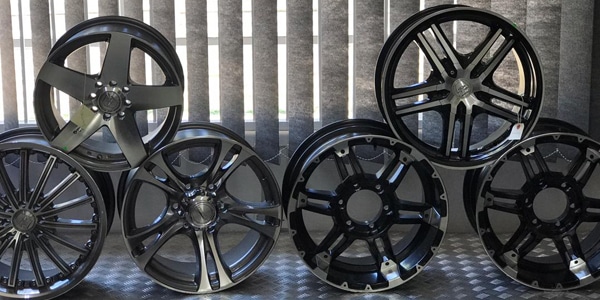Upgrading your Rims and Tyres
If you’re looking to improve your vehicle’s performance and add a touch of style, you should consider upgrading your rims and tyres.
At Autoworld 4×4, we have a host of aftermarket options available for upgrading your rims and tyres for a range of vehicles, including Isuzu, Toyota, Ford, and more.
What do we mean when we say aftermarket?
Aftermarket rims are made and sold by companies other than the original equipment manufacturer (OEM) of a vehicle. They are designed to replace the rims that come with a vehicle, offering improved aesthetics, performance, and durability. They are generally available in a variety of styles, finishes, and sizes, and are made from materials such as aluminium alloy, steel, and carbon fibre.
Using aftermarket rims to improve your vehicle’s performance
The type of rim used on a 4×4 vehicle can have a significant impact on your vehicle’s off-road performance. It is critical to select rims that are specifically designed for off-road use and are compatible with your vehicle and tyre size.
 The following are some of the advantages of aftermarket rims:
The following are some of the advantages of aftermarket rims:
– Durability: Changing your OEM rims for stronger and more durable aftermarket rims can better withstand the harsh conditions and impacts of off-road driving, reducing the risk of damage or failure.
– Weight: You may want to upgrade to lighter rims to achieve a reduction in rotational mass. Heavy rims can affect your vehicle’s performance as your engine has to work harder to move the car’s wheels. This can affect your vehicle’s ability to turn and accelerate quickly, your overall fuel consumption, and your ability to slow down quickly.
– Tyre fitment: If you replace your tyres with larger, more aggressive tyres to better handle off-road conditions, you may want to consider changing your rims to ensure they fit your tyres better.
– Design: Some aftermarket rims are specifically designed for off-road use and can feature additions such as a reinforced bead area, which helps to prevent tyre slippage and keep the tyre securely mounted to the rim.
– Increase your tyre’s contact patch: You may want to upgrade your wheels (rims and tyres) to increase your tyre’s contact patch, where your tyre meets the road surface, and thus increase handling, acceleration, braking, traction, and steering.
– Vehicle appearance: If your 4×4’s original rims have been damaged or rusted, changing them can improve your vehicle’s appearance which can affect its resale value. Additionally, a slightly bent rim can cause tyre pressure issues, disrupt your driveshaft, cause axle problems, and negatively impact your vehicle’s steering and performance.
Changing your tyres and rims can also be a matter of personal preference. You may simply want to change your rims for personal reasons, such as to match your personal style or taste.
Types of rims:
When deciding which rims you want to upgrade to you should consider how you are going to use your vehicle, on what type of terrain you will be doing most of your driving, and how much you are willing to spend.
– Steel vs alloy
A steel rim is made from steel that has been rolled and pressed into shape, then welded together. These are generally factory fitted rims. They are heavier than alloy wheels but are generally cheaper and more durable. If you find yourself in a bind on an off-road track, a steel rim can generally be banged back into shape so that you can get home.
Alloy rims are a mixture of aluminium, nickel, magnesium, and a few other metals, depending on the brand and quality. Alloy rims generally cost more, but because they’re lighter, they put less strain on the suspension of your car and are more fuel efficient, so they can save you money in the long run. While they are lightweight and corrosion-resistant, they are more prone to bending and cracking.
-
Cast vs forged
Another question you must ask yourself is do you want cast or forged rims?
Cast rims are less expensive due to the manufacturing process, but they are also generally weaker than forged wheels. They are formed when molten aluminium is poured into a mould where it is then cast into its final shape.
Forged rims are stronger and more expensive than cast rims. They are made from a large square piece of solid metal that is heated to extreme temperatures and pressurised to take on the desired shape. They are significantly lighter and stronger than cast wheels.
—
Aftermarket rims come in a variety of styles, finishes, and designs, allowing you to customise the look of your vehicle. They can be used to upgrade the look of a vehicle, improve handling and acceleration, and increase resale value.
Remember to purchase a proven wheel-and-tyre combo specifically designed for your vehicle to ensure it doesn’t affect your braking and suspension. Chat to the knowledgeable team at Autoworld 4×4 for their recommendations for your vehicle.

